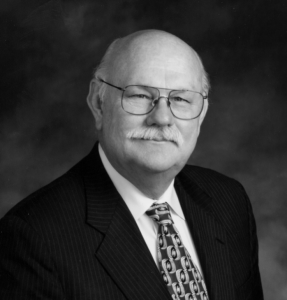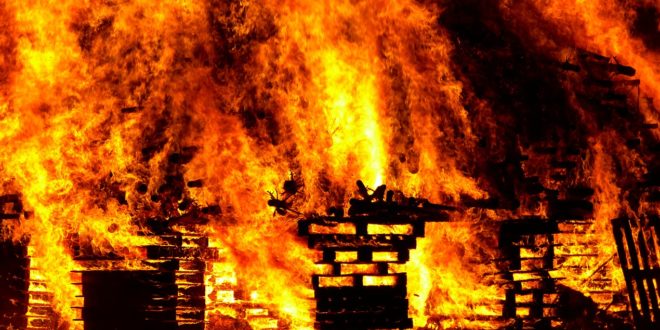This is not a rhetorical question. Is America still burning? If we go back as early as the 1947 Fire Conference sponsored by President Harry Truman, you can see that fire loss has taken a terrible toll on the economy of our community and our nation. Well within the experience of our current fire officers, we have seen tremendous fire loss continue to occur. The Ghost Ship warehouse fire in Oakland, California and the wildland interface fires in Sonoma, California are two examples. A seminal document in the assessment of this fire loss for the current generation is America Burning. Recent fire experience begs the question of whether or not we are winning or losing in the battle of fire prevention.
The headlines continue to document significant losses in our communities. Who could have predicted the encroachment of an urban wildland fire into a suburban neighborhood, such as the disaster that occurred in Santa Rosa, California? Recent fires have resulted in fatalities that reflect the same kinds of fatalities that occurred in the 1910 fires.
I believe that it is all together appropriate that we continue to admit that America is still burning and statements from that document still hold true today.1 “Fire is a major national problem.”
One aspect of continued fire growth is cited in America Burning. “The efforts of individuals and organizations in the fire protection field have run against the twin tides of ignorance and indifference – tides which contribute substantially to the extraordinary magnitude of the fire problem in the United States.”2
Therein lies the problem. We in the fire service have assumed responsibility for a problem that is impacted by political forces and is subject to knee-jerk reaction when events actually occur. How many fire chiefs and fire marshals have attempted to resolve the problem locally only to be told that their recommended solutions are too expensive? Many fire departments are experiencing a phenomenon of having fire losses that are extraordinary. The losses could be worse. We are confronted on the one hand with a reoccurring fire problem that rises to a public debate every 20 or 30 years. And yet, the politicians who often have a one- or two-term perspective do not see it that way.
They say that those who do not remember history are doomed to repeat it all over again.3 We need to remind all of our political bodies of the ridiculous repetition that goes into these tragic losses. I submit that part of the reason we continue to have major losses is that the current generation that is responsible for fixing the problem is thwarted by the lack of perspective.
It can be said that each generation has attempted to reduce the significance of the fire problem with the use of the fire and building code. If we go back and compare the codes that were in existence when America Burning was first published, there have been significant inroads that have been made. Frequently in the aftermath of catastrophic fires there have been surges in improvements in those codes. Yet, the phenomena still repeats itself.
There may be some silver lining through all of this. Recently, the City of Lodi, California experienced a very serious hotel fire. The newspaper article describing this event had a unique headline: “Lodi Hotel Fire Illustrates No-Sprinkler Dangers.”4 Perhaps this is a sign that local media has finally gotten the message about sprinklers. The battle is not over, as there are still tremendous numbers of buildings in the community that should have sprinkler protection. We have to stick to our guns on retrofit for these occupancies.
Fire is still a major public policy issue in the United States. America is still burning. We need to continue focusing our attention on the education of public policy makers as they are the ones that must support active fire prevention programs through code adoption. We need a constant drum beat heralding the automatic fire sprinkler cause.
Sprinklers have been around for over 100 years. One of the excuses given about older structures is that sprinklers were not required when the buildings were built. One question remains and that is why weren’t they installed way back then? As long as we have non-conforming buildings, they are going to have the potential for significant fire loss. America will continue burning.
Summary America continues to have a fire problem. We need to continue with public education efforts to convince the policy people that built-in fire protection is a viable solution. We cannot afford to rest on our laurels for past successes. Emphasis needs to continue on addressing the legacy fire problem. There needs to be continued debate of repetitive fire problems such as the urban interface.
REFERENCES:
1.https://www.usfa.fema.gov/downloads/pdf/publications/fa-264.pdf
2. America Burning
3. George Santayana
4. Sangree, Hudson, Lodi Hotel Fire Illustrates No-Sprinkler
Dangers, Sacramento Bee, February 26, 2018
 ABOUT THE AUTHOR: Ronny J. Coleman is currently the president of Fireforceone. He is a past president of the IAFC and CFAI. Over his lifetime, he has received numerous awards including the AFSA’s 1989 Henry S. Parmelee Award, the 2011 Mason Lankford Award from the Congressional Fire Services Institute, and the Tom Brennan Lifetime Achievement Award from Fire Engineering in 2014. He continues as a contributor to the fire service in many ways.
ABOUT THE AUTHOR: Ronny J. Coleman is currently the president of Fireforceone. He is a past president of the IAFC and CFAI. Over his lifetime, he has received numerous awards including the AFSA’s 1989 Henry S. Parmelee Award, the 2011 Mason Lankford Award from the Congressional Fire Services Institute, and the Tom Brennan Lifetime Achievement Award from Fire Engineering in 2014. He continues as a contributor to the fire service in many ways.
 Sprinkler Age A Publication of the American Fire Sprinkler Association
Sprinkler Age A Publication of the American Fire Sprinkler Association

